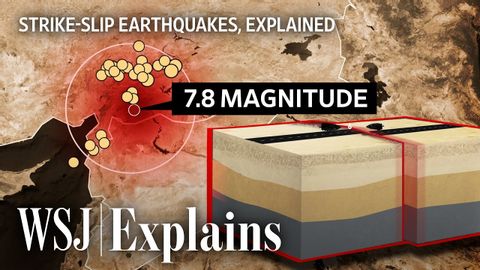土敘強震背後的成因 (The Science Behind the Massive Turkey-Syria Earthquakes | WSJ
 沒有此條件下的單字
沒有此條件下的單字US /ˈvʌlnərəbəl/
・
UK /ˈvʌlnərəbl/
- adj.脆弱的;易受攻擊的;易受傷的;脆弱的;易受影響的;需要特別照顧的;易受批評的;(橋牌中)易受攻的
US /ˈkɑnstəntlɪ/
・
UK /ˈkɒnstəntli/
- v.t./i.出現;估計;我認為〜;認為
- n.身影;(計算過的)數量;肖像;圖;形狀;人物;名人;人影;數字
